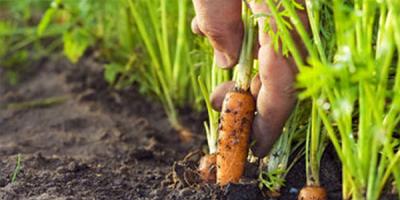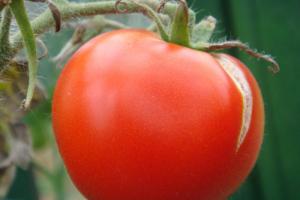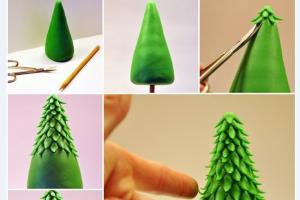During the growing season, trees and shrubs require systematic watering until the root layer of soil is completely moistened. Under no circumstances should the roots be allowed to dry out!
∗∗∗
Watering of trees and shrubs is carried out depending on weather conditions, the mechanical composition of the soil and its moisture, the depth and width of the root system and on average occurs at least 15 times during the growing season.
∗∗∗
In the first year after planting, the ground under the tree should be constantly moist, so in the first months intensive watering is necessary in all weather conditions. It is especially important to water plants during dry periods during the summer and fall.
∗∗∗
Watering begins when warm weather sets in: when the air temperature is more than 7 ºС (April - early May). Best time glaze– morning, before 10 o’clock, or evening, after 18 o’clock. Water for irrigation should be warm: +15…+22 º C.
∗∗∗
Watering plants during the growing season must be done taking into account their growth and development. During the most active period, in May–June, watering should be done at least 3–4 times a month, in July–August – 2–3 times, in September – once.
∗∗∗
Excessive watering is undesirable: it impedes the process of root respiration. Water can move highly soluble nutrients to depths that roots cannot reach and displace oxygen from the soil.
∗∗∗
On average, about 50 liters of water are needed per 1 m² of tree trunk. For shrubs the norm will be about 20 liters per 1 m². For large trees, calculate the required moisture of at least 15–20 liters per 1 m of tree height per watering.
∗∗∗
After watering, the soil around the tree trunks must be mulched to avoid excessive evaporation of moisture and the formation of crust. Peat compost can be used as mulch (layer 3–5 cm).
Currently, crushed pine bark and chips, and pine nut shells are also used as mulching material - they retain moisture in the soil well, increase its temperature and create a decorative frame for plantings.

∗∗∗
The trees are watered abundantly using a hose. Irrigation with sprinkler systems is often ineffective, since it only provides moisture upper layer soil. To the roots large trees, water does not reach a depth of 50–60 cm or more.
∗∗∗
Watering of trees is not carried out when persistent frosts occur (air temperature below -5 ºС).
∗∗∗
If the tree is planted in the fall, then watering is required, especially in the presence of prolonged warm, dry weather ( winter watering).
∗∗∗
How much watering a given plant needs can be determined in a simple way: take a handful of earth under a tree and squeeze it in your fist. If the lump crumbles after unclenching your fingers, the soil needs to be watered. With sufficient moisture, the lump will remain intact. If, when you squeeze the soil, it spreads between your fingers, then the soil is waterlogged.
∗∗∗
In order to prevent excessive evaporation of moisture from the root layer of soil, it is necessary to remove weeds and loosen the soil in tree trunk circles. The depth of loosening should be no more than 6 cm to avoid damage to the roots.
∗∗∗
Along with watering, the aboveground part should be irrigated by finely spraying the leaves with water. This is especially important for large people coniferous species. Spraying is carried out by fine-droplet sprinkling in the morning and evening hours. Sprinkling helps clean the above-ground part of pollutants, free the stomata from dust, which helps improve transpiration, and also helps remove some pests. This procedure can be combined with foliar feeding with mineral fertilizers and microelements.

∗∗∗
Stagnant waterlogging of the soil in the area, resulting from close (less than 2 m) occurrence groundwater and (or) difficulty in surface water flow, can lead to waterlogging of the area. In this case, serious reclamation measures are necessary, in particular the creation of a drainage system. Plants for such areas must be selected with special care, giving preference to those that can tolerate rising groundwater levels or partial waterlogging.
______________________________________________________

Water is part of all tissues of the fruit tree. To create 1 kg of dry matter, an apple tree consumes 300-400 kg of water. With a lack of moisture in the soil, growth slows down, the yield and frost resistance of the tree decreases. Excess moisture is also harmful. If the soil is waterlogged, then there is not enough air for the roots, microbiological activity decreases, and ferrous forms of iron and manganese accumulate - toxic to plants. Apple and plum trees are the most demanding of water; cherries require less watering.
Experience shows that abundant and infrequent watering of fruit trees is more beneficial than watering in small doses. When watering, it is necessary to wet the soil to the depth of the roots: the watering rate for apple trees is 60-80 cm, for pears - 40-50 cm, for cherries - 30-40 cm, for plums - 20-30 cm. This requires 1 square meter. meter on light sandy and sandy loam soils 4-5 buckets, on loamy soils the norm is 6-7 buckets of water.
Approximate schedule for watering fruit trees
In the first year after planting the tree, the tree trunk circle is watered 4-5 times per season, 2-3 buckets per watering for apple and pear trees, and 1-2 buckets for cherries and plums. In subsequent years, the watering rate is increased, adding 2-3 buckets for each year of the tree’s life.
The first watering of fruit trees is carried out immediately after flowering, and in the case of early spring with dry and hot weather, watering begins before flowering. The second watering is carried out after 15-20 days, which promotes better fruit set. The third watering is carried out in the summer after the second during fruit filling early varieties and the formation of fruits of late varieties. In September, a fourth watering is carried out, which is favorable for root growth and fruit filling of late varieties.
For cherries and plums, 3-4 waterings are sufficient: at the beginning of summer, 2 weeks before the fruit ripens, after harvesting.
The last watering that the garden needs - moisture recharging - is needed to create moisture reserves for the spring and improve wintering. It is held in mid-October.
Methods of watering fruit trees
The most common watering is in tree trunk bowls, along furrows, sprinkling, drip irrigation and subsurface irrigation.
When watering in bowls under the tree, make a roller according to the size of the crown and fill it with water. In spring, earthen rollers perform the function of retaining melt water. When watering furrows under the tree crown, cut circular furrows at a distance of 0.5-0.8 m from each other with a depth of 10-15 cm so as not to damage the roots (closer to the trunk the depth of the furrows is less). Water is released along the furrows to saturate the soil, while a board or other object is placed under the stream of water from a hose to reduce the speed of the stream and prevent destruction of the soil structure.
Sprinkling - The best way watering the garden. It ensures uniform and slow wetting of the soil and humidifies the air. To do this, use various devices and nozzles for spraying water.
Drip irrigation and subsurface irrigation involve laying a system of pipes with branches to which tubes with tips are connected, from which water is supplied. With subsurface irrigation, water is supplied under pressure through humidifiers buried in the soil. Water is supplied to the development zone of the root system.
Never water fruit trees to standard The suction roots are located behind the crown projection. The bulk of irrigation water should be supplied to the rows of the fruit-bearing garden.
To reduce water consumption for watering the garden, reduce the evaporation of soil moisture, it is necessary to keep the soil loose and free from weeds, and to form a good agronomically valuable soil structure. After each watering and some drying of the soil, it is loosened to break the capillaries and mulched with peat, humus, rotted manure, and sawdust.
In the fall, when digging up the soil, leave its surface unleveled: it absorbs water better when the snow melts. In the spring, as the soil dries out, harrow it and create a loose topsoil, which ensures better soil heating.
An important task for a gardener is to organize watering of the garden correctly, because nature does not always take care of watering our gardens on time. Watering is especially important when the fruits are filling and ripening, and the month is usually hot.
When and how much water does the garden need??

When and how much water each tree needs so that the water brings only benefits to it, no one but you can determine, because it depends on many factors only known to you: what age is your garden, and what kind of trees grow in it, what kind of soil is in the garden and soil moisture, when was the last time it rained in your region...
When to water main garden crops?
It is advisable to irrigate at the beginning of phenophases:
— active growth,
— harvest formation,
- laying flower buds for next year's harvest.
Young trees planted in the spring of the current year are watered 2-3 times a month.
Apple and pear
Apple and pear trees are watered more abundantly in May-July and moderately in August-September. In dry summers - 3-4 waterings, in severe drought - 4-5 waterings. For trees with early As the fruits ripen, the number of waterings is reduced by one, and with later periods, the number of waterings is increased by one.
— 1st watering - in early June, after the excess ovary falls off;
— 2nd - in mid-July, 2-3 weeks before the fruits ripen summer varieties(this watering promotes the filling of fruits and the laying of fruit buds for next year’s harvest);
- 3rd - in dry summers and high harvests in August, additional watering of the entire garden is carried out;
- 4th - in early September for trees of winter varieties.
Cherries and sweet cherries
Cherries and sweet cherries require a lot of water. They are watered during the same periods of the growing season and in the same doses as apple trees.
- 1st watering - at the very end of spring, during shoot growth;
- 2nd - two weeks before fruit ripening;
- 3rd - immediately after harvest.
Plum and cherry plum
Plum and cherry plum are very demanding on soil and air moisture. Plum trees do not tolerate both lack and excess moisture. The greatest need for water is in spring and the first half of summer.
— the first watering is carried out in the spring, during the growth of shoots;
- 2nd - at the end of June and beginning of July, during the period of formation and filling of fruits and to prevent the dropping of the ovary;
- 3rd - after and cherry plum.
Young cherry and plum trees that do not bear fruit need to be watered in June and July.
Sea buckthorn
Sea buckthorn is very responsive to watering during the berry-filling period.
The watering rate for sea buckthorn is 30-35 l/m².
In dry autumn, it is necessary to carry out water-recharging watering of the entire garden in October at the rate of 4-5 buckets per 1 m².
Observing the moisture content of the soil layer in which the bulk of the tree roots are located will also help you determine the timing of watering:
— for a young garden, the thickness of the wet soil layer is 20-50 cm,
— for fruiting apple trees - 70-90 cm,
- pears - 40-50 cm,
- cherries - 30-40 cm,
- plums, cherry plums, sea buckthorn - 20-30 cm.
How much water do fruit trees need??

I think there is no need to say that watering infrequently, but abundantly, is many times better than watering frequently, but sparingly.
Watering rates for fruit trees:
— for a non-bearing seedling - 3-5 buckets (30-50 l),
- for a 3-5 year old tree - 5-8 buckets (50-80 l) of water,
- for a 7-10 year old tree - 12-15 buckets (120-150 l) of water,
- for a tree older than 12-15 years - 3-5 buckets per 1 m2 of trunk circle.
For example, on sandy soils the number of waterings should be increased and the water rate reduced, but on clay - vice versa.
It is also necessary to take into account landscape features plot - part of the water may flow down the slope or, conversely, stagnate if the garden is located in a hollow.
On hot sunny days, if possible, you can carry out refreshing sprinkling of the entire garden, which has a very good effect on the condition of the plants.
Today you learned how to organize watering of the garden - when and how much water fruit trees need, and we will discuss the garden and how to more easily deliver water to the roots of plants later. I am sure that the information received will help you keep your garden fresh and productive in any weather.
In the first years after planting, trees really need water. They definitely need to be watered. In areas with sufficient precipitation during spring and the first half of summer, trees are watered three to four times, and in dry areas six to eight times.
Watering fruit trees should be abundant, capable of soaking the soil to a depth of at least 50-60 centimeters. In areas of sufficient moisture within one watering for one newly planted tree spend two or three buckets water , and in dry conditions - three to four buckets. For seven to ten year olds tree watering rate increases to ten to fifteen buckets. Average water norm per 1 square meter trunk circle amounts to two or three buckets, and sometimes four to five buckets.
 Irrigation in ring grooves
Irrigation in ring grooves
For better preservation moisture and bringing water closer to the bulk of the roots watering produce not superficially, but into the annular grooves who do according to trunk circle in the amount of two or three. On heavy soils ring grooves do depth 10-15 centimeters, 20 centimeters wide at a distance of no closer than 1 meter from the trunk. After the water is absorbed into the soil, ring grooves fall asleep and tree trunk circles level.
In irrigated areas it is best to carry out furrow irrigation .
For Polive and fruit trees in a young garden it is enough to arrange one furrow on each side of the row at a distance of approximately 60-80 centimeters from the trees. In home gardens it is quite justified "cup" watering , directly to tree trunk circles ("). After watering, the soil in the garden is loosened.
Video: How to properly care for fruit trees
How to properly care for fruit trees
When caring for a young garden, it is necessary to ensure the survival rate of all planted fruit trees, to create conditions for good growth seedlings and building the correct tree crown, as well as ensuring the early entry of trees into the fruiting season.








